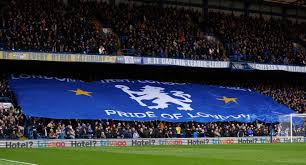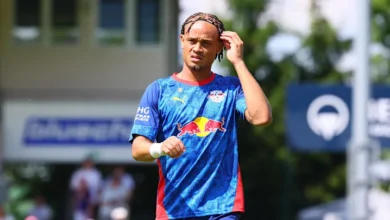
The Ship of Theseus is a well-known philosophical thought experiment that raises a profound question: If every part of a ship is gradually replaced over time, is it still the same ship? Or has it become something entirely different?
This dilemma perfectly captures the identity crisis many Chelsea fans are experiencing today. What exactly are we watching? Is this still Chelsea, or has it become something unrecognizable?
Over the past two decades, Chelsea has gone through various transitions—different owners, managers, and playing styles.
Yet, through all the changes, one thing remained constant: a connection between the players and the fans. That connection, which once defined Chelsea, feels lost.
The Players Fans Could Believe In
Chelsea has never been a club defined by one single style of football. From the defensive resilience of Mourinho to the attacking brilliance of Carlo Ancelotti and the tactical adaptability of Thomas Tuchel, Chelsea teams have taken many forms. But regardless of how they played, Chelsea fans always found something to believe in—the players.
Even when the football was pragmatic or even unattractive, as it was during Mourinho’s second spell, fans stood by the team because they trusted the individuals on the pitch. Frank Lampard, John Terry, Didier Drogba, Eden Hazard, and Diego Costa were more than just talented footballers; they were warriors who fought for the club.
These players created moments that made fans fall in love with Chelsea—Terry’s bloodied head against Reading, Lampard’s emotional goals against Bolton and Liverpool, Drogba’s penalty in Munich, and Hazard’s title-clinching goal against Tottenham. They weren’t just passing through Stamford Bridge; they embodied its spirit.
Even in the disastrous 2015/16 season, when Chelsea finished 10th, there was no identity crisis. Fans were disappointed, but they still trusted Hazard and Costa because they had delivered before. They had won together, suffered together, and had an emotional connection with the supporters.
That trust wasn’t built overnight. It was a generational cycle. Hazard was easy to believe in because Lampard trusted him. Costa and N’Golo Kanté were easy to trust because Hazard relied on them. This generational handover kept Chelsea’s identity alive.
A Club Without Continuity
Today, that cycle has been broken. There is no generational handover, no continuity between squads. Instead, Chelsea’s squad has been completely reset with young players who have no ties to the club’s past. They might be talented, but they haven’t earned trust yet. And unlike past teams, they have no club legends to lean on.
Most Chelsea fans don’t see these players as an extension of the club but rather as employees. They’re here to get paid, develop their careers, and eventually move on. That’s not how you build lasting bonds.
A decade ago, Chelsea signed players like Juan Mata, Oscar, and Hazard, but they were joining a squad that had Petr Čech, Ashley Cole, Lampard, and Terry. There was a link between the old and the new. Young players integrated into the club’s culture.
Now, Chelsea has signed 20 new players in the space of two years, and there is no emotional bridge between them and the fans. The club has essentially pressed the reset button, discarding the past and expecting fans to accept a new era without question. That’s not how football works.
The Difference Between Long-Time and New Fans
This disconnect has also widened the gap between different groups of Chelsea fans. Long-time supporters—those who have followed the club for years—see Chelsea as more than just a brand. It’s a family, a community. Players aren’t just employees; they are symbols of the club’s identity.
Newer fans, on the other hand, often view Chelsea more like a global brand, similar to Nike. It doesn’t matter whether Tiger Woods or Cristiano Ronaldo represents Nike—the brand remains. Likewise, some newer fans support Chelsea regardless of who plays, as long as the results are good.
For long-time fans, Chelsea isn’t just about trophies; it’s about the moments, the bonds, and the legacy. Players come and go, but the emotional connection between the club and its supporters should remain.
The Challenge of Rebuilding Trust
So, can this bond be rebuilt? Possibly—but it will take time. The responsibility lies with the players to earn trust, create memorable moments, and show commitment to the club. Chelsea fans won’t embrace them simply because they wear the shirt. They need to prove they are more than just temporary employees.
The most common way fans build bonds with players is by watching them integrate into the club’s fabric. That doesn’t mean they have to be lifelong Chelsea fans before arriving, but they need to show passion, fight, and a willingness to sacrifice for the badge. That’s how previous generations won the fans over.
The club must also take responsibility. Chelsea fans have been given a squad of random individuals with no prior links to the club and expected to cheer them on as if nothing has changed. That’s unfair. Fans spend their hard-earned money, time, and emotions on the club. They can’t be expected to instantly connect with a team that feels like it was assembled in a boardroom rather than built over time.
Chelsea’s greatest teams didn’t just win trophies—they built relationships with the fans. Right now, Chelsea feels like a ship where all the parts have been replaced. The question is: Can it still sail with the same spirit as before? Or has it become something entirely different?





